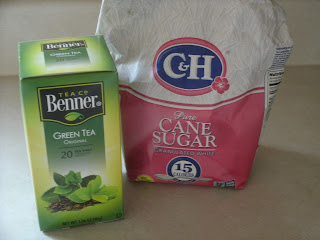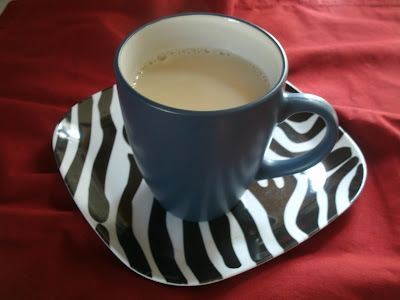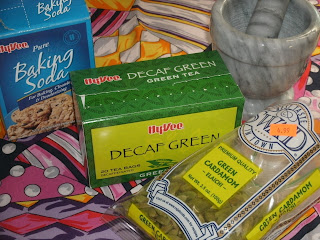Sweden
Today we travel to Sweden. Considering the fact I live in a part of the country originally settled by people from Nordic countries, Sweden feels pretty close sometimes. Actually I think there are more Norwegians in the northern part of this state where I used to live, and one thing I did learn is that Norwegians and Swedes like to differentiate themselves, at least in this country. Sweden and Norway actually share a peninsula in northern Europe. It makes sense that they live side by side here as well. Sweden has a 1000+ year history of being a sovereign state, and rose from being an impoverished, "backwards" society to a nation with one of the highest standards of living and life expectancy in the world. I really don't know what my resource means by being a "backwards" society. Being a bit of an oddball myself, I don't really like that description.
The land is described as having 3 distinct regions. The north has forests and mountains. The middle part of the country is described as having lowlands in the east, and highlands in the west. The south is described as highlands with small, rich plains. I like their descriptions of the land being shaped by glaciers since I grew up in an area that was also shaped by glaciers. As I understand it, there were no glaciers in the area where I live now. 15% of the country is inside the Arctic Circle, which reminds me of Alaska. I have been to the Arctic Circle (during the summer), so I know what the 24 hour sunlight is like. My friend who lived in Alaska described the 2 hours of twilight daylight in the winter. That was enough for me, I didn't need to see that. The weather of Sweden is described as favorable thanks to warming from the north Atlantic current, and interactions from the continental climate. While parts of the country have snow for 8 months of the year, the most severe temperatures are described as being -22 to -40 Fahrenheit. Those low temperatures are very comparable to the worst we get here. I'm trying to remember what the lowest actual temperature was last winter. -40, -50? All I remember is that it was darn cold. We also had ice quakes since it was warm enough for some rain a few days before the cold set in, and since ice expands, the freezing temperatures were causing the ground to explode apart.
The forests in the north sound a lot like Alaska with fir, birch, and pine. I know that they will look scrawny and stunted, but be perfectly healthy because of permafrost, and the type of climate they grow in. In the south, some deciduous trees grow. I like the note about how all people are allowed to walk through the forests and fields to pick berries and mushrooms when they are growing. Around here, you need a permit. I was also amazed to read that orchids grow in certain parts of Sweden. I always think of them as a plant that loves warm weather, but I know they are a very diverse species.
In the 1980s, a large influx of asylum seekers started coming to Sweden, and by 2016, 1/6 of the population had been born outside of the country. I was also intrigued to find that there are 2 indigenous groups of people in the country as well. While they were originally hunters and fishers, they have changed over to reindeer herding, or working more traditional jobs in the Swedish society.
About 63% of the Swedish population is Lutheran, with the rest of the population being described as "other" religions. I guess the jokes about Lutherans among the local Nordic populations are well founded. The majority of the country's inhabitants live in urban areas, and the age distribution of the population from "under 15" to age 74 is pretty evenly distributed. They have a surprisingly clean electrical grid consisting of 50% hydro power, and 50% nuclear power. Since they don't have any fossil fuels, they have learned to largely live without them for electricity.
I like their list of imported foodstuffs. Coffee, tea, fruit, and fish. The focus of my attention made the top 4 on the list. When I fist started looking for information about tea in Sweden, I found that they had a sense of humor with their dry ice tea skit.
I was impressed that she had a tea cake that she was carrying for her tea. I haven't purchased one of those yet. They tend to be a bit pricey, and it is a lot of tea to use up. I think the one tea cake they sell at my favorite tea shop is over $40.
Finally, I came across a video of every day tea in Sweden. It was the same thing over and over (with different snacks shown on the side).
First, black tea gets poured into the cup.
Then milk gets added.
It's as simple as that. A popular way to take tea around the world. Given the fact that winter lasts a good 8 months (I know that they would count fall and spring in those 8 months, but if there is snow on the ground, it's winter to me), you would need a lot of hot drinks to keep you going.
The land is described as having 3 distinct regions. The north has forests and mountains. The middle part of the country is described as having lowlands in the east, and highlands in the west. The south is described as highlands with small, rich plains. I like their descriptions of the land being shaped by glaciers since I grew up in an area that was also shaped by glaciers. As I understand it, there were no glaciers in the area where I live now. 15% of the country is inside the Arctic Circle, which reminds me of Alaska. I have been to the Arctic Circle (during the summer), so I know what the 24 hour sunlight is like. My friend who lived in Alaska described the 2 hours of twilight daylight in the winter. That was enough for me, I didn't need to see that. The weather of Sweden is described as favorable thanks to warming from the north Atlantic current, and interactions from the continental climate. While parts of the country have snow for 8 months of the year, the most severe temperatures are described as being -22 to -40 Fahrenheit. Those low temperatures are very comparable to the worst we get here. I'm trying to remember what the lowest actual temperature was last winter. -40, -50? All I remember is that it was darn cold. We also had ice quakes since it was warm enough for some rain a few days before the cold set in, and since ice expands, the freezing temperatures were causing the ground to explode apart.
The forests in the north sound a lot like Alaska with fir, birch, and pine. I know that they will look scrawny and stunted, but be perfectly healthy because of permafrost, and the type of climate they grow in. In the south, some deciduous trees grow. I like the note about how all people are allowed to walk through the forests and fields to pick berries and mushrooms when they are growing. Around here, you need a permit. I was also amazed to read that orchids grow in certain parts of Sweden. I always think of them as a plant that loves warm weather, but I know they are a very diverse species.
In the 1980s, a large influx of asylum seekers started coming to Sweden, and by 2016, 1/6 of the population had been born outside of the country. I was also intrigued to find that there are 2 indigenous groups of people in the country as well. While they were originally hunters and fishers, they have changed over to reindeer herding, or working more traditional jobs in the Swedish society.
About 63% of the Swedish population is Lutheran, with the rest of the population being described as "other" religions. I guess the jokes about Lutherans among the local Nordic populations are well founded. The majority of the country's inhabitants live in urban areas, and the age distribution of the population from "under 15" to age 74 is pretty evenly distributed. They have a surprisingly clean electrical grid consisting of 50% hydro power, and 50% nuclear power. Since they don't have any fossil fuels, they have learned to largely live without them for electricity.
I like their list of imported foodstuffs. Coffee, tea, fruit, and fish. The focus of my attention made the top 4 on the list. When I fist started looking for information about tea in Sweden, I found that they had a sense of humor with their dry ice tea skit.
I also found a video about making tea while camping. At least I assume they were camping. Certainly doing something outdoors.
I was impressed that she had a tea cake that she was carrying for her tea. I haven't purchased one of those yet. They tend to be a bit pricey, and it is a lot of tea to use up. I think the one tea cake they sell at my favorite tea shop is over $40.
Finally, I came across a video of every day tea in Sweden. It was the same thing over and over (with different snacks shown on the side).
First, black tea gets poured into the cup.
Then milk gets added.
It's as simple as that. A popular way to take tea around the world. Given the fact that winter lasts a good 8 months (I know that they would count fall and spring in those 8 months, but if there is snow on the ground, it's winter to me), you would need a lot of hot drinks to keep you going.





Looks like you missed the best part-- the snack!
ReplyDeleteI don't recall any of those snacks being low carb. That would be a problem given what I'm trying to accomplish.
Delete